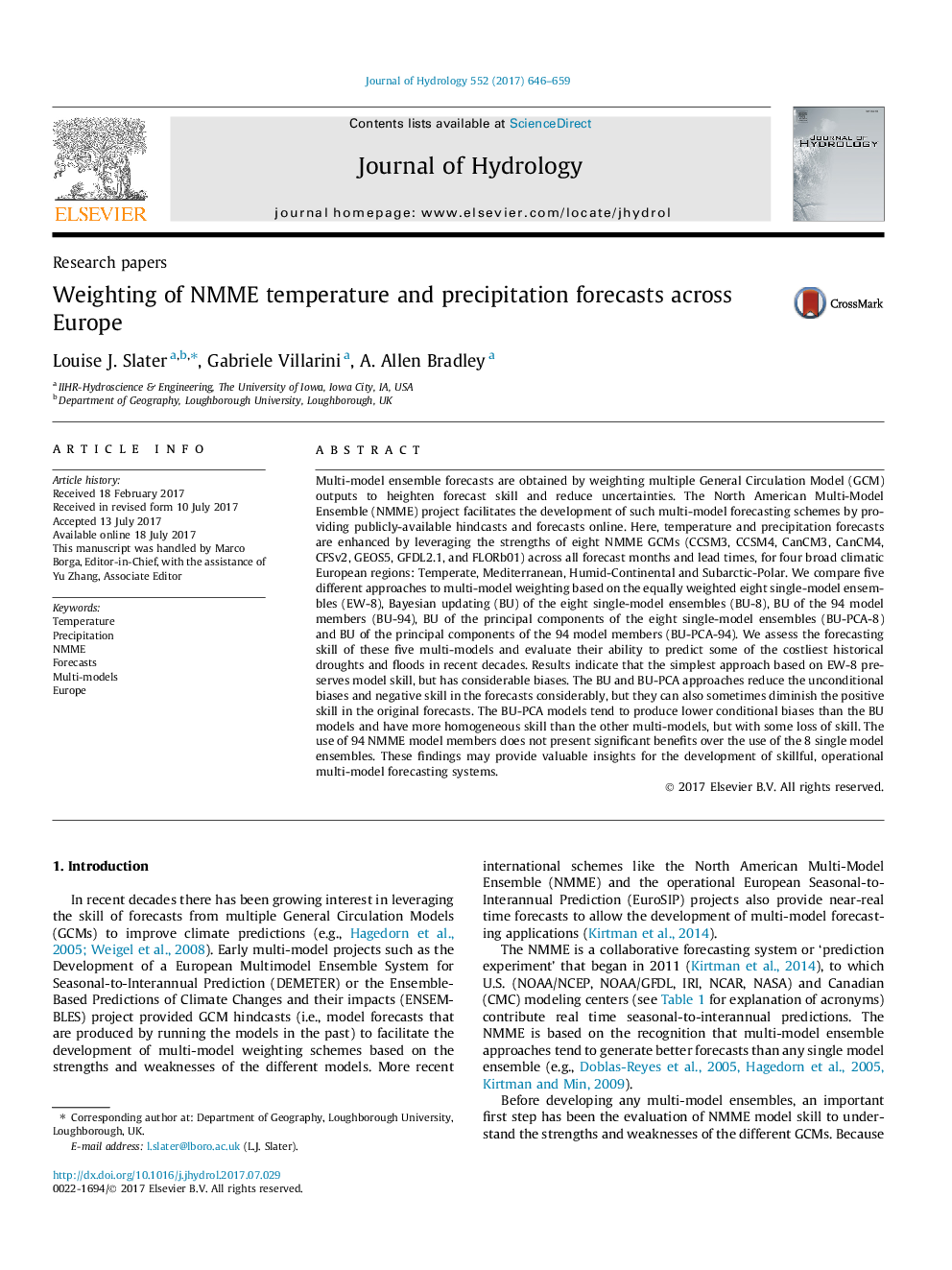| Article ID | Journal | Published Year | Pages | File Type |
|---|---|---|---|---|
| 5771189 | Journal of Hydrology | 2017 | 14 Pages |
â¢NMME precipitation and temperature forecast skill are assessed across Europe.â¢The forecasting skill of five weighted multi-models is compared.â¢Equal model weighting preserves forecast skill, but with considerable biases.â¢Bayesian updating reduces conditional biases and homogenizes the skill.
Multi-model ensemble forecasts are obtained by weighting multiple General Circulation Model (GCM) outputs to heighten forecast skill and reduce uncertainties. The North American Multi-Model Ensemble (NMME) project facilitates the development of such multi-model forecasting schemes by providing publicly-available hindcasts and forecasts online. Here, temperature and precipitation forecasts are enhanced by leveraging the strengths of eight NMME GCMs (CCSM3, CCSM4, CanCM3, CanCM4, CFSv2, GEOS5, GFDL2.1, and FLORb01) across all forecast months and lead times, for four broad climatic European regions: Temperate, Mediterranean, Humid-Continental and Subarctic-Polar. We compare five different approaches to multi-model weighting based on the equally weighted eight single-model ensembles (EW-8), Bayesian updating (BU) of the eight single-model ensembles (BU-8), BU of the 94 model members (BU-94), BU of the principal components of the eight single-model ensembles (BU-PCA-8) and BU of the principal components of the 94 model members (BU-PCA-94). We assess the forecasting skill of these five multi-models and evaluate their ability to predict some of the costliest historical droughts and floods in recent decades. Results indicate that the simplest approach based on EW-8 preserves model skill, but has considerable biases. The BU and BU-PCA approaches reduce the unconditional biases and negative skill in the forecasts considerably, but they can also sometimes diminish the positive skill in the original forecasts. The BU-PCA models tend to produce lower conditional biases than the BU models and have more homogeneous skill than the other multi-models, but with some loss of skill. The use of 94 NMME model members does not present significant benefits over the use of the 8 single model ensembles. These findings may provide valuable insights for the development of skillful, operational multi-model forecasting systems.
